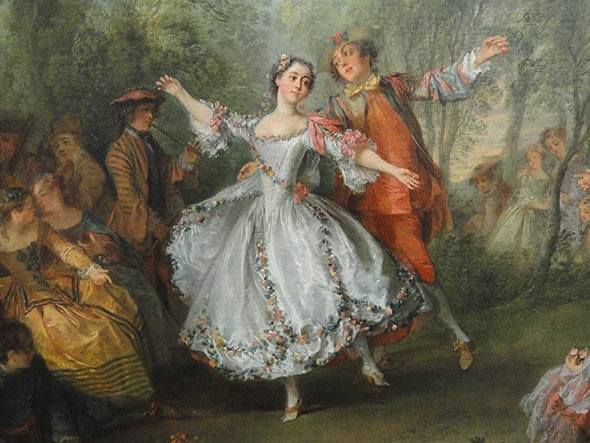DANSOX Summer School, St. Hilda’s College, Oxford
Posted: July 17th, 2019 | Author: Nicholas Minns | Filed under: Conference | Tags: Alastair Macaulay, Ben Warbis, Christopher Bird, Dansox, David Mallett, Ellie Ferguson, Elly Braund, Fiona Macintosh, Gabriela Minden, Jennifer Jackson, Jonathan Still, Julia Bührle, Lynne Wake, Maggie Watson, Maurice Béjart, Moira Goff, Nadine Meisner, Renata Bräuninger, Richard Alston, Sue Jones, Susie Crow, Tom Armstrong, Tom Sapsford | Comments Off on DANSOX Summer School, St. Hilda’s College, OxfordDansox Inaugural Summer School, St. Hilda’s College, Oxford, July 6-8

The inaugural DANSOX Summer School, curated by Professor Sue Jones over a three-day weekend at St. Hilda’s College, Oxford, brought together scholars, authors, critics and practitioners to share their knowledge of dance as a language on a multitude of levels. Alastair Macaulay, former chief dance critic of the New York Times, anchored each daily session with a talk about a major influence on our dance heritage — Marius Petipa, George Balanchine and Merce Cunningham respectively — illustrated with extensive video footage. As a dance critic of long standing, Macaulay approached each body of work with a perspective that was rich in historical detail and, in the case of Cunningham, personal association. His interpretations were the fruit of repeated viewings and reflection, while he filled out the lives of their creators and interpreters with a propensity for vibrant and often amusing anecdotes. The broad canvas he painted each morning set the tone for the sessions that followed.
After Macaulay’s lecture on Petipa, historian Moira Goff gave a talk on and a demonstration of baroque dance. While classical ballet steps (and their terms) derive from the French court, Goff displayed the form and dynamics of those steps from Feuillet’s notation, and how they developed from France to the English Restoration stage. She not only gave clues to the form of a performance from this era but showed how these origins of classical ballet technique lead us inexorably to Petipa’s vocabulary in the late nineteenth century.
Researcher and author Julia Bührle provided more historical detail in her talk on two important dancing masters of the seventeenth and eighteenth centuries, John Weaver in England and Jean-Georges Noverre in France. Each wrote a treatise that legitimized ballet d’action in terms of literary sources and Bührle cites Weaver’s 1717 spectacle, The Loves of Mars and Venus, and Noverre’s 1763 Medée et Jason as the forerunners of narrative ballet.
Bringing us into the twentieth century, filmmaker Lynne Wake introduced her documentary, Queen and Béjart: Ballet For Life. Béjart took his choreographic inspiration from the music of Queen to celebrate the lives of those like Jorge Donn and Freddie Mercury who had died young as a result of AIDS. The documentary combines rehearsals by Béjart Ballet Lausanne (an outstanding cast directed by Gil Roman) with outtakes from 1997 footage by David Mallett of the first performance of Ballet For Life in Paris. Wake’s documentary is moving in both its filming and its editing (by Christopher Bird), and shows how the lineage of classical ballet has evolved from the confines of a royal court to a vast public arena.
Each day followed a similar pattern of synaptic sparks tying all the talks and demonstrations together. After Macaulay’s lecture on Balanchine, musicologist and dance researcher Renata Bräuninger gave an incisive talk on Balanchine’s musicality followed by Gabriela Minden’s exploration of Tamara Karsarvina’s experiment in gestural choreography (harking back to Weaver and Noverre) for J.M. Barrie’s 1920 play The Truth about the Russian Dancers, and by Maggie Watson’s paper on aspects of the pastoral in Sir Frederick Ashton’s Daphnis and Chloe.
While each talk revealed how much historical and theoretical research on dance is still waiting in the wings, Susie Crow offered a practical approach to the history and theory of the ballet class with the help of pianist Jonathan Still and dancers Ben Warbis and Ellie Ferguson of Yorke Dance Project. This vital focus on balletic training is linked to current teaching practice, which in turn drives the future direction of classical ballet. Keeping on the subject of practice, Jennifer Jackson and composer Tom Armstrong organised a workshop with dancers Courtney Reading and Gabrielle Orr on Sleeping Beauty, showing how their contemporary approach to both classical choreography and its musical score can generate a fresh interest in such iconic works.
Following two talks by Fiona Macintosh and Tom Sapsford that linked dance and the classics, the final day continued with Macaulay’s lecture on Cunningham, and Sir Richard Alston’s demonstration, with dancer Elly Braund, of his relationship to Cunningham’s choreography throughout his dance career and in subsequent dances he created on his own company. The notion of classicism in dance was a theme throughout the DANSOX summer school and it concluded where it began with that most ‘classical’ of choreographers, Petipa. On hand was author and former dance critic, Nadine Meisner, to celebrate the launch of her Marius Petipa, The Emperor’s Ballet Master, ‘the first biography in English of this monumental figure of ballet history’, published appropriately by Oxford University Press.